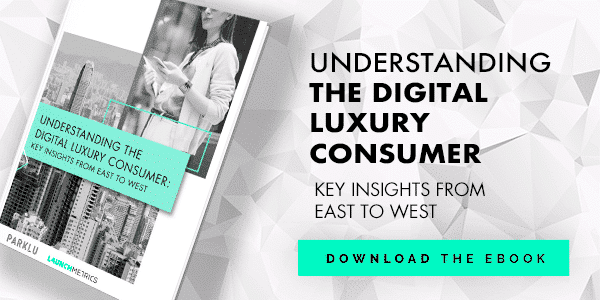The New York Times Luxury Conference 2018 was held in Hong Kong recently. For the past 14 years Industry leaders have gathered in this Chinese territory to debate and present their findings and points on the future of luxury, with a focus on the comparison between Western and Eastern consumers.
For Launchmetrics, it was a particularly exciting edition as we had the wonderful opportunity of presenting our findings featured in Understanding the Digital Luxury Consumer: Key Insights from East to West, a report created in partnership with PARKLU. Arnaud Roy, our Chief Strategy Officer, and Vanessa Friedman, Fashion Director of New York Times, discussed the data analysis, particularly highlighting the power of influencers in China. See New York Times’ video here. We thought it would be a great opportunity to bring you insights from other presentations as well, which is why we sat down with our Chief Marketing Officer, Alison Bringé, who attended this two-day event. Following are her key points taken from the conference:
NYT Luxury 2018 Takeaways
What were your top takeaways from the two days of talks?
I would say how the world is becoming more about personalization. Ian Rogers discussed the power of technology and digital, and how data will play a key role in this shift. It will no longer just be about personalization, but creating a unique world and experience for each customer (think about how the Instragram feed works: every single Instagram user has their own unique feed).
The customer journey is still an on and offline experience, even in Asia which is more noted for being better “connected” than its western counterparts. Brands need to think carefully about how to reach these customers physically. And with globalization, brands should think about building one voice with many stories to address local customers.
Was there any particular presentation that really stood out for you? If so, why?
Several! The Alibaba presentation had some interesting statistics about the Chinese consumer, and how their experience is still very much offline and online with 20% of it being online whereas 80% is offline. One of the speakers from Baccarat had an interesting comment about how the first influencer ever was the king of France, and how he had parties with other “influencers”. Sometimes we forget that the concept of “influencers” has actually been around for ages.
I think the one that had the most impact for me was the presentation by Ian Rogers about how we are moving to a market of one. He stated that this century will be defined by how humans use data to understand behavior, as we do. When we talk about a market of one, it means every individual will get everything tailored to them. And with Artificial Intelligence, even mass market brands can market to that market of one.
What is your first hand impression of the Asian luxury consumer? Would you say their usage differs to their Western counterparts? How?
As the opening speaker from RUYI, Qiu Yafu said, Chinese Shoppers are among the savviest in the world, always having the best understanding of currency conversion and now it impacts costs of luxury goods (they are always traveling to other countries to find the best price). I guess I was most surprised at how advanced social commerce was in Asia but how in the end, the Asian consumer still needs twice as many brand interactions to convert to buy than customers in the west.
When you were speaking with other delegates at the New York Times Luxury Conference 2018 what were people most curious about in regards to Launchmetrics and what we do?
I think attendees were really interested in our data and having similar analysis to their brands. I also think there was a lot of curiosity and skepticism about influencers. Some brands recognized the value these content creators can generate and some were really put off, or uninterested in investing in this practice. I think what’s key for them to realize is the value these influencers are already bringing to brands (and you can see this in the data in our report). And even more, to understand how traditional media AND influencers can co-exsist as each helps brands achieve different goals and objectives (i.e. traditional media for awareness, influencers for legitimacy etc).
The future of the luxury market will most likely be the notion of a ‘market of one’, where brands tend to each customer individually, both online and offline. Considering the Chinese consumer is still very much offline (20% of consumers according to Alibaba), brands will need to think more about customer experience, they will need to “map the customer journey and build a plan around that.”
We hope you enjoyed these insights and key takeaways from the New York Times Luxury Conference 2018 that Alison brought us, and be sure to check out our latest report, Understanding the Digital Luxury Consumer: Key Insights from East to West.

